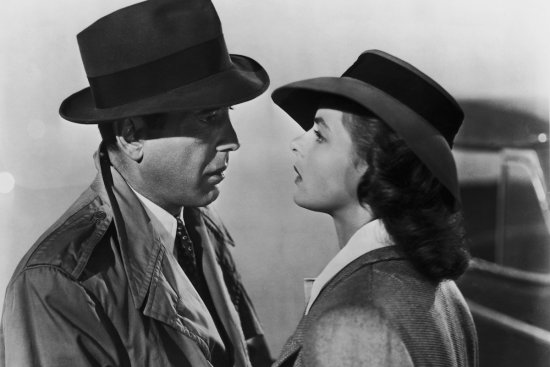
"Mr. Bogart at last does the manly thing"
The long gap between the premiere and the main U.S. release date for Casablanca was no accident. After all, when the now-classic film premiered in New York City on Nov. 26, 1942 — 75 years ago this weekend — it was just weeks after American troops saw their first overseas combat in World War II’s Europe and North Africa campaign in, of all places, Casablanca. Suddenly, the movie’s title was in the news across the nation, so the picture was hurried into the theater.
The fighting and intrigue in North Africa helped make the film newsworthy, but as TIME’s critic noted upon its release, the timing wasn’t the only thing the movie had going for it:
[time-brightcove not-tgx=”true”]Before the U.S. seizure of Morocco handed Warner Bros. some of the most dazzling promotion in years, Casablanca was just an exotic location for a topical melodrama. The city was known to European refugees as a desperate whistle stop on the underground railway to Lisbon. This picture is about some refugees who were stranded in Casablanca and some of the people who helped or hindered them. Among them:
>The proprietor of Rick’s Cafè Americain (Humphrey Bogart, so tough that at one moment he looks like Buster Keaton playing Paul Gauguin). A strictly cynical neutral, Rick likes to snarl: “I stick my neck out fer nobuddy.”
> Laszlo, leader of the European underground (Paul Henreid), still breathing hard after three escapes from the Nazis.
> His wife Ilsa (Ingrid Bergman, whose beautiful performance transfigures a vapid role). Once in Paris she thought she was a widow, and fell in love with Rick. But she left him as soon as she learned that Laszlo was alive. Rick is still trying to get over it. So is Ilsa.
Conrad Veidt, looking more & more like a scarred wolfhound, has a few moments as a Nazi captain. Peter Lorre, as a petty passport racketeer, is knocked out of the show after 20 minutes. Sydney Greenstreet briefly represents the émigré black bourse. Oldtimer S. Z. Sakall (who should consider wearing his face in a brassière) steals scene after scene as usual, merely by wobbling his jowls. Claude Rains is a bush-league Laval.
The climax of Casablanca concerns the efforts of Laszlo and his wife to leave Morocco. Rick has two letters of transit which would make that easy. Reluctant to help, Mr. Bogart at last does the manly thing and Mr. Rains saves him from the consequences. Nothing short of an invasion could add much to Casablanca.
As TIME’s Lance Morrow rhapsodized when the movie hit 40 in 1982, even as the film acquired a timeless status, it remained forever linked to that moment in time when it was released.
“About Casablanca there clings a quality of lovely, urgent innocence. Those who cherish the movie may be nostalgic for moral clarity, for a war in which good and evil were obvious and choices tenable,” he wrote. “They may be nostalgic for a long-lost connection between the private conscience and the public world. Casablanca was released three years before the real moment of the fall of the modern world: 1945. That year, the side of good dropped nuclear bombs on cities full of civilians, and the world discovered Auschwitz. We have not yet developed the myths with which to explain such matters.”
Correction: The original version of this article incorrectly described the first overseas World War II combat by American troops. Americans first fought in the Pacific, not in North Africa. Operation Torch, in Casablanca, saw their first large-scale offensive involvement in the war’s Europe/North Africa campaigns.